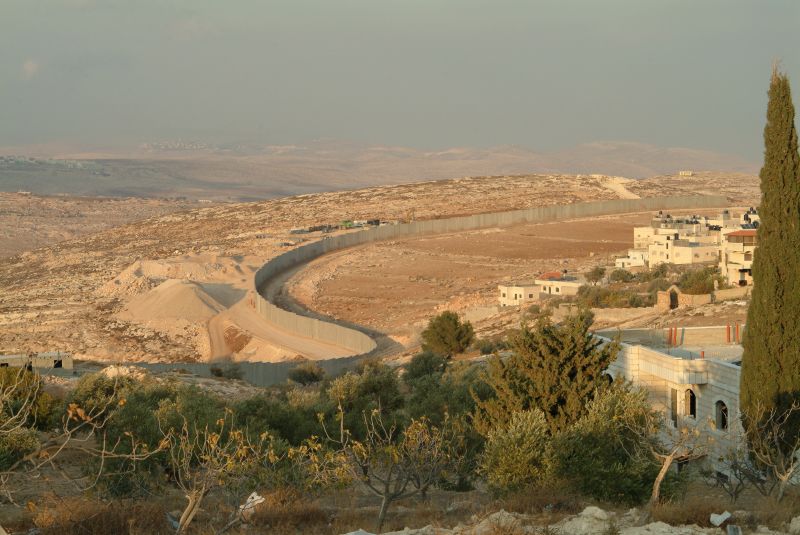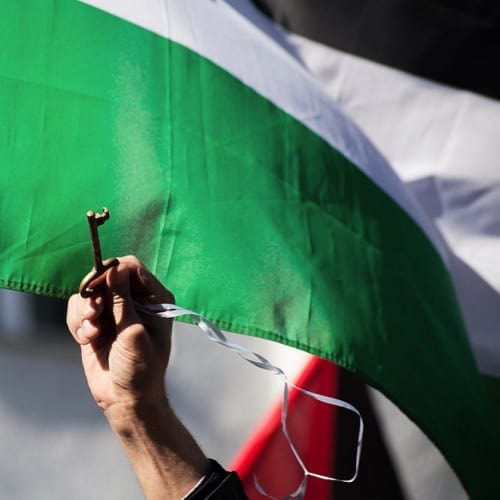When the Jewish Agency in Tel-Aviv announced the institution of the Provisional Government of Israel on 14 May 1948, the war that followed resulted in the destruction and mass evacuation of most Palestinian villages. The end of the war saw the territory of Mandatory Palestine divided between the Zionist colonies and the Arab forces that intervened on the ‘behalf’ of the Palestinian side. Whereas the former took control of a large part of the territory designated as the British Mandate of Palestine, Egypt and Jordan respectively administered Gaza and annexed the West Bank. Those who left their land and abandoned their houses to flee the mass persecution and atrocities perpetrated by the Haganah and other Jewish forces were therefore prevented by the newly born state of Israel from returning to their homes and lands.
Three-quarters of a million people, many injured during the violent Jewish–Arab conflict, were suddenly transformed into a humanitarian problem: the Palestinian issue. Palestinians from southern parts of Mandatory Palestine fled to the Gaza Strip; those from the centre dispersed to the West Bank; and refugees from the north spread out into southern Lebanon and Syria. According to the Red Cross, about 320,000 Palestinian refugees stayed in the West Bank; 210,000 went to the Gaza Strip and 180,000 to other Arab countries. Around 100,000 Palestinians found refuge in the East Bank (today’s Jordan).

The Palestinian refugees, thus, became soon the focus for the development of a vast and complex network of institutionalized assistance composed of the host governments, Red Cross, UN, and several NGOs, which were assigned or assumed responsibility to deal with their material needs. Techniques of control were implemented by way of silencing the political predicament of Palestinians under the guise of a humanitarian issue.
However, if such techniques of control aimed to generate a social unitary group – the ‘refugees’ – without social, historical and political links with the past in order to facilitate its integration in the host countries, the result was quite different, and a culture of political resistance emerged and thrived amongst Palestinians.
In this context, Mjriam Abu Samra explores a crucial rupture point in Palestinian politics and culture of resistance: the Oslo Agreements. Her insightful analysis offers a unique understanding of the dynamics and trajectories that have led to what Edward Said has aptly defined as “the Palestinian Versailles”. This historical excursus serves the author also to address the current weakness of the Palestinian leadership and indicate possible solution to this political conundrum.
The nature of the Israeli occupation has spurred harsh criticism and bitter debate in and outside the academia. Lori Allen and Ajantha Subramanian show the violence and brutality of Israeli occupation through the eyes of the American Anthropological Association (AAA)’s Task Force on Israel/Palestine. Theirs is also a convincing account of the capacity of ethnography to unveil comparative patterns – namely between the experiences of Palestinians and those of U.S. racialized minorities.
As Allen and Subramanian point out, the Task Force ultimately endorses an academic boycott as the strongest, yet inherently problematic, action to take. It is in this very framework that Luigi Achilli interrogates the legitimacy of “Anthropologists for the Boycott of Israeli Academic Institutions”: a petition whose primary goal is to boycott Israeli academic institutions for their active role into the systematic violation of Palestinian basic rights.
Achilli argues that behind many anthropologists’ reticence to subscribe to the petition there may be an intellectual detachment that has historically characterized the discipline.

Fighting against academic aloofness is exactly what Smadar Lavie – well-known activist and anthropologist – does in her piece entitled “Israeli Anthropology and American Anthropology: Our “Special Relations”. Lavie writes in the context of the initiative “Coalition against Apartheid in Israeli Anthropology” (CAAIA) that the author and her colleagues launched in 2004 and that acted as a veritable precursor to the AAA-BDS. In her post, the author denounces – among other things – the highly racist and discriminatory nature of Israeli academia and its close links with American anthropology.
This thematic week on Palestine is also an opportunity for us, at Allegra, to feature an interview with Israeli historian Gish Amit whose book “Ex-Libris: Chronicles of Theft, Preservation and Appropriation at the Jewish National Library” came out (in Hebrew and Arabic) last year. Because the cultural aspect of the conflict is rarely disccussed, Amit’s contribution is a useful reminder of the multifaceted forms of dispossession Palestinians have had to endure over the years.
Finally, we approached Eleonore Merza , an anthropologist and activist, who runs the project “DEcolonizer: Research and Art Laboratory for Social Change“. She shares her view on the BDS campaign and the various tools Decolonizer has put in place in order to address the issue of Israeli colonialism and zionism.





